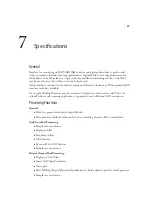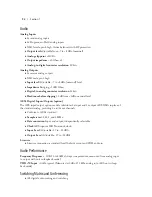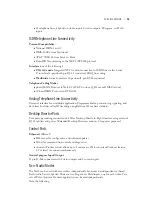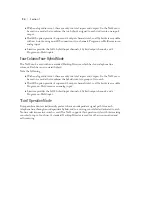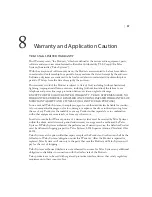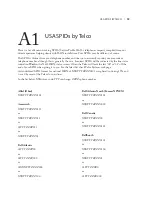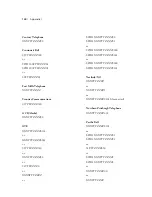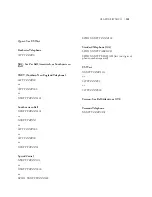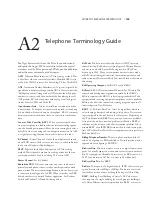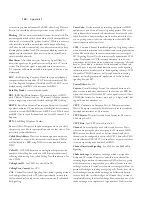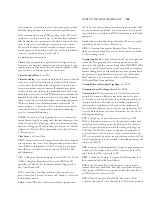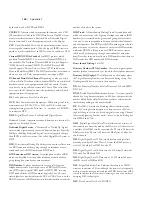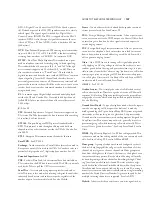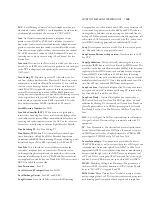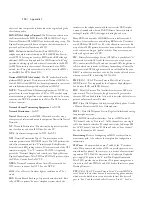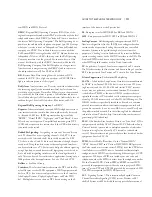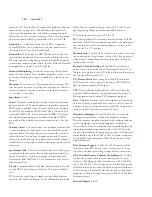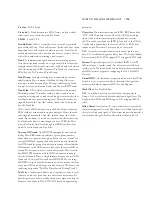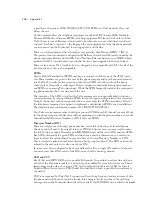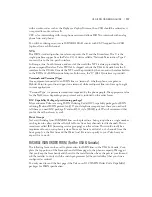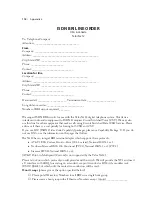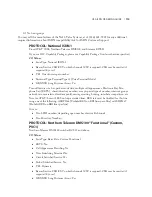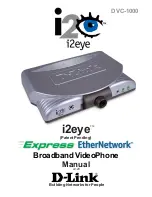
104
| appendix 2
or incentive to potential tenants. If a BLEC offers Long Distance
Service it is covered by the same regulations as any other LEC.
Blocking
- When a circuit switched call cannot be completed. The
percentage of blocked calls to the number of calls attempted forms
the basis of a statistic called “grade of service”. While it is economi-
cally infeasible to build a network that would have no blocking,
the Telcos are held accountable by the utility commissions to keep
blocking below tariffed levels. The concept of blocking cannot be
applied to packet networks (they just lose packets, instead), only
circuit switched networks.
Blue Alarm
- Also called an Alarm Indicating Signal (AIS). A
keep-alive signal sent if a problem occurs mid-span in a T-carrier
system. The blue alarm signal is required because in some cases
T-1 repeaters will become unstable if inadequate 1’s density is not
maintained.
BOC
- Bell Operating Company. One of the regional telephone
companies that were owned by AT&T before divestiture in 1984
(i.e. New England Telephone, Ohio Bell, etc). The 22 BOCs were
divided among the RBOCs at divestiture. See RBOC.
Both Way Trunks
- see combination trunks.
BRI
- ISDN Basic Rate Interface- The common form of ISDN
with 2 “Bearer” Channels and one “D” channel. All three channels
are on a single copper pair and encoded with type 2B1Q coding.
BRITE
- Basic Rate Interface Transmission Extension. A technol-
ogy where ordinary T-1 trunks (or any other digital carrier system)
are used to extend ISDN BRI service. BRITE uses 3 DS0 channel
per BRI - One for each B channel and one for the D channel. See
Repeater.
BTN
- See Billing Telephone Number.
Business Office- The part of the phone company where you call if
they mess up your bill, to report problems, and to order service. Not
necessarily technically literate.
Called Party Address
- This is the destination phone number of a
call delivered to a switch. For instance this could be the CLID of
a call delivered to a PBX using DID or two-way trunks. See also
DID.
Caller ID
- A CLASS feature on an analog line that provides the
number of the calling line as a burst of FSK data (modem tones)
following the first ring. Also called Calling Line Identification. See
also CLASS.
Calling Line ID
- See CLID. See also Caller ID.
Calling Party Control
- See CPC.
CAS
-Channel Associated Signaling. A bit-based signaling method
used on digital lines (such as T1) that is periodically inserted into
the low order bit also used for the audio transmission. See Robbed
Bit Signaling.
Cause Code
- A code returned by switching equipment to ISDN
equipment as part of the call control signaling protocol. The cause
code indicates that a network call-related event has occurred or has
failed. Since these codes actually come from the network, the fact
you are getting a cause code is an indication that that the ISDN
circuit is operational at some level.
CCIS
- Common Channel Interoffice Signaling. A signaling system
where network information such as address and routing information
are handled externally to the actual communications (voice) path.
SS7 (Signaling System 7) is the internationally standardized CCIS
system. Deployment of CCIS increased efficiency since no com-
munications (voice) channels are used merely to report an “all trunks
busy” or “far end busy” conditions. It also decreased toll fraud sub-
stantially since it removed the potential for access to the signaling
information that was inherent to in-band signaling schemes. CCIS
also enables CLASS features as well as sophisticated re-routing
features for “intelligent network” applications. See also in-band
signaling. See also SS7.
Central Office
- See CO
Centrex
- Central Exchange Service. An enhanced business tele-
phone service intended to offer most of the features of a PBX but
where the lines are all from the LEC out of a public switch. Offers
CLASS-like features for business users such as 4-digit “inside” dial-
ing, hold, transfer, attendant, etc.
CEPT
- Conference on European Posts & Telecommunications.
This is a European standards body that formerly set the standards
for telephone interfaces for 26 countries.
CEPT Format
- The usual rate and frame format for E1 circuits.
2.048 mbps. See E1.
CEPT Rate
- See CEPT format. See also E1.
Channel
- An actual path you can talk or send data over. This is
what you are paying the phone company for. For instance, ISDN
BRI lines can be ordered with 1 or 2 active channels and these
channels can be configured for voice calls (CSV), data calls (CSD)
or both (alternate CSD/CSV). A channel does not necessarily have
it’s own unique telephone number. See ISDN.
Channel Associated Signaling
- See CAS. See also Robbed Bit
Signaling.
Choke Exchange
- A telephone exchange, which is assigned to
Radio and TV stations, Promoters, and other users that will be
receiving large numbers of simultaneous calls. The idea is to group
all of these users on a single exchange so when all routes into that
exchange are in use “normal” users (on other exchanges) will not ex-
perience blocking of incoming or outgoing calls. Trunks from other
local exchanges into the choke exchange are deliberately limited
to just a few paths so callers will get an “all trunks busy” instead of
completely blocking their local exchange. However, when one of the
choke exchange users experiences a large number of calls (as when
Summary of Contents for Nx12
Page 4: ......
Page 42: ...32...
Page 100: ...90 Section 6...
Page 105: ...Specifications 95...
Page 106: ...96...
Page 108: ...98...
Page 112: ...102...
Page 124: ...114 Appendix 2...


